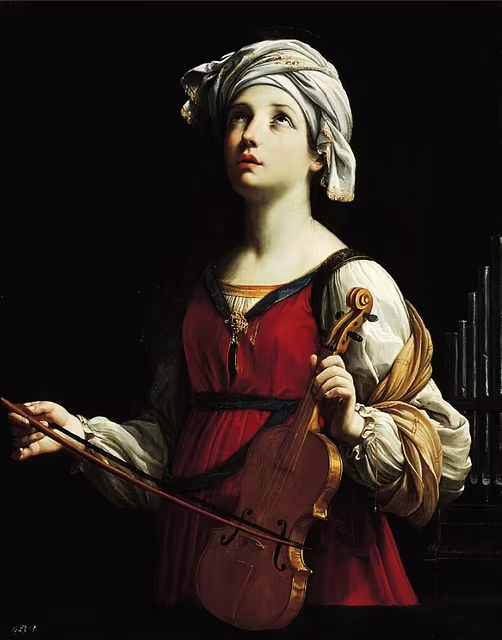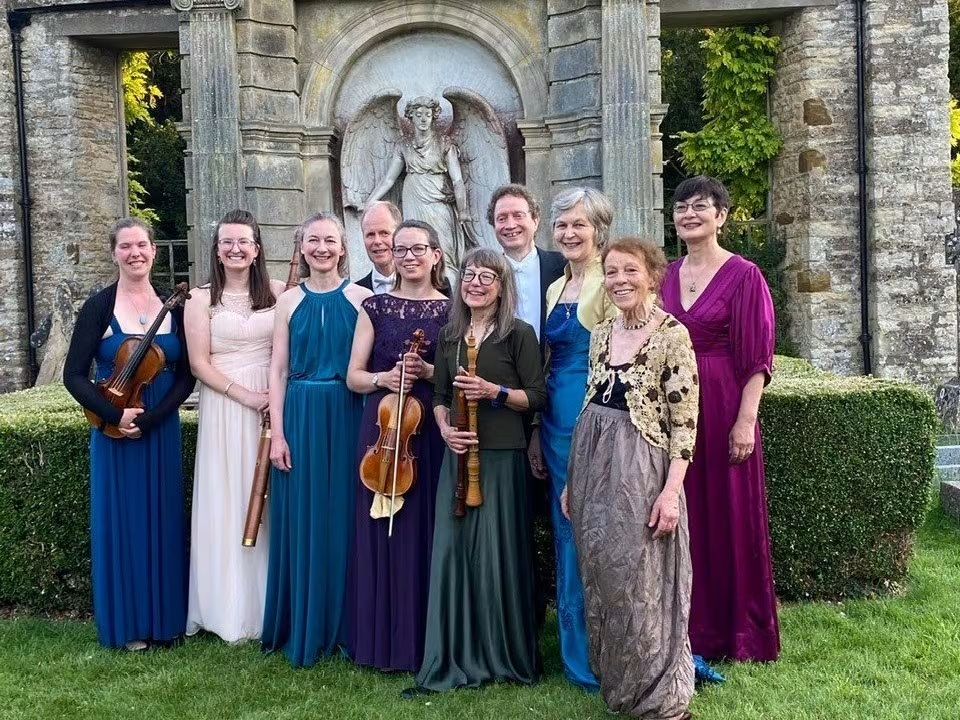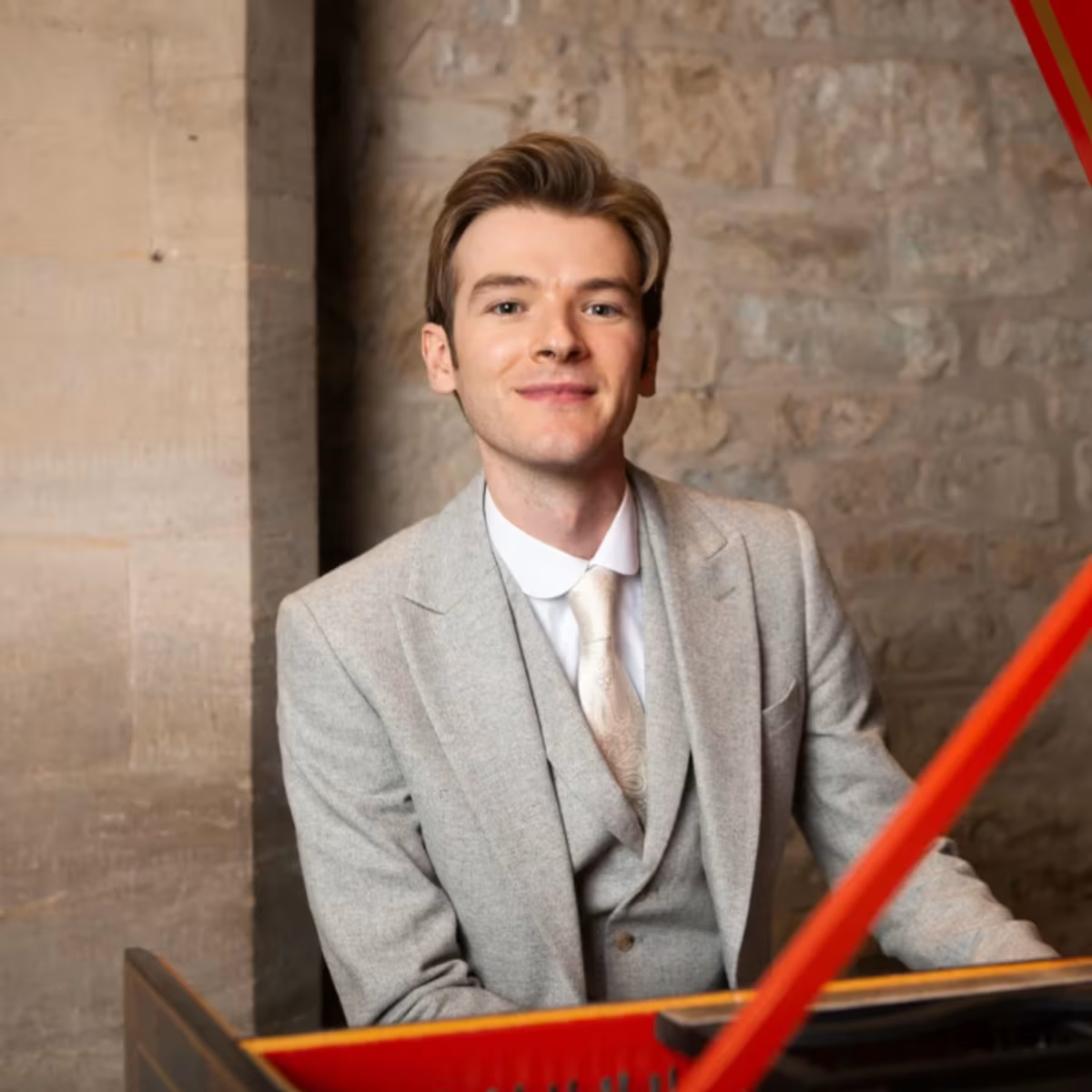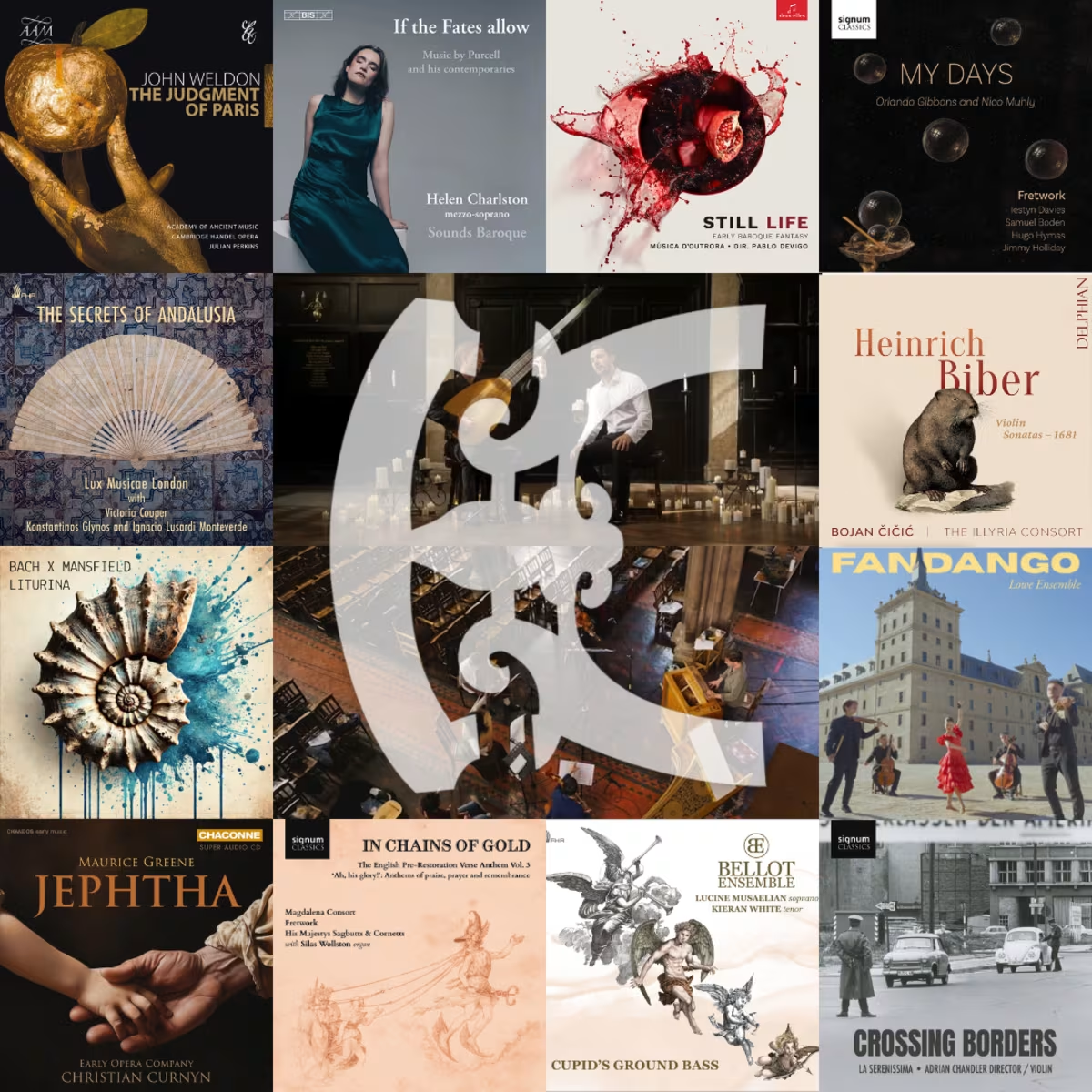Feature
Rising from the ashes: Music for St Cecilia
The first-ever public performance of Colombani's ‘Il martirio di Santa Cecilia’ by Fiori Musicali
Share this

BY DR PENELOPE RAPSON | FIRST PUBLISHED 07 NOV 2025
This season, Fiori Musicali are putting together a series of three concerts all tied together under the wings of the ‘phoenix’ – the mythical bird of fire, sun, death, resurrection and rebirth that symbolises the conflagration of the old in order to give birth to the new.
Freed from the constraints of the intellect, music, too, transcends, having the capacity to move us from the anchor of our roots in the past to an inspiration for the future – through the glorious, but always transient musical moment of the present.
These concepts are particularly relevant to our first concert which fêtes St Cecilia on her Saint’s Day, 22 November, with the first modern-day professional public performance of Colombani’s ‘Il martirio di Santa Cecilia’, an oratorio on St Cecilia’s ecstatic martyrdom that has been hidden away in the archives since shortly after its first performance in Rome in 1701.
During the middle ages, St Cecilia’s life and death – her passage through suffering to spiritual ecstasy – were a potent representation of the phoenix myth. Initially the patron saint of painters, during the 16th century Cecilia became patron saint of musicians. However, her association with music is somewhat tenuous, deriving from a slightly jumbled translation of the Latin. The famous words, ‘Cantantibus organis, Caecilia virgo in corde suo soli Domino cantabat’ (‘and while they sang, the virgin Cecilia sang in her heart to God alone’), describes Cecilia’s state of mind during her nuptials with Valerian. Far from being absorbed in the singing that was going on, the Latin text describes Cecilia as being in her own world, ‘singing in her heart to God alone’. Despite (or perhaps because of) the garbled translation (the word ‘organis’ is the word causing the confusion), St Cecilia is frequently depicted in the iconography holding an organ.

In the words of Dr Holly Roberts, writing in the Journal of Seventeenth-Century Music, ‘librettist Giovanni Nicolò Benedetti and the composer Quirino Colombani merge St Cecilia’s medieval identity with early eighteenth-century religious mysticism’. The result is that ‘the performance of Cecilia’s ecstatic martyrdom becomes “aural iconography”, a form of religious spectacle comparable to the visual arts, where performed rapture is moved from the private to the public realm.’ Dr Robert’s thesis is that ‘the treatment of saints’ legends in late seventeenth and early eighteenth-century Italian oratorios [. . .] demonstrates how saints’ identities [. . .] were repurposed to serve church needs, and [. . .] to reflect contemporaneous religious philosophies and devotional practices’ of the Counter-Reformation.
And music was key. Not just for saints. There is a well-known description of musical rapture written by Cardinal Federico Borromeo (a prominent figure in the Counter-Reformation) who describes the transcendental way music inspired the devotional activities of the 16th-century musician, (former prostitute) and Dominican mystic, Caterina Vannini. Indeed, since the late middle ages, many literary accounts describe the phenomenon of musical ecstasy, while during the 16th and 17th centuries, saints and music are frequently depicted together in the iconography portraying states of celestial rapture, e.g. in Guido Reni’s 1606 painting of Santa Cecilia, courtesy of the Norton Simon Museum of Art, Pasedena.

As Roberts comments, ‘by the late 17th century, most oratorios did not include an extended plot or dramatic sequence of events, but rather focused intently on saints’ emotions and their spiritual development as they faced opposition to the faith’. In other words, composers and librettists fused core Roman Catholic beliefs with affecting music, with the intention that audiences would learn about the path to salvation through the (pleasurable) delight of their senses and emotions.
Accordingly, in his oratorio Colombani omits the well-known story of St Cecilia and Valerian’s marriage. Instead Cecilia, whom we meet at the beginning of the oratorio showing the characteristics of the medieval saint, venerated for her healing (particularly of blindness, both physical and spiritual), becomes, through Colombani’s musical depiction of her rapture, reborn as a mystic spiritual martyr of the Counter-Reformation. (There’s that phoenix theme again)
Colombani opens his Il martirio di Santa Cecilia shortly after Cecilia and Valerian‘s wedding festivities. Valerian is looking forward to the wedding night, but then quickly discovers that Cecilia has accepted the Christian God as her true spouse and is accordingly intending to devoted herself to a life of chastity (not exactly what he was planning!). As the work proceeds, we learn that not only does Cecilia succeed in converting her newly-wed husband (and thereby safeguard her chastity), she also converts his brother, assuring him in the aria ‘Vola in grembo’ that his conversion is much more than the renewal of spiritual sight, and that he will ‘be reborn as a true Phoenix of Heaven’ (once again, the imagery of the phoenix...).
Colombani scores the oratorio for the kind of slender forces prevalent in Rome at the time. The work calls for four solo voices – Cecilia (soprano Judit Felszeghy), Valerian (alto Judith Daykin), his brother Tiburtio (rising-star tenor Jonathan Hanley) and the Roman prefect Almachio (bass Andrew Tipple). The orchestra is sparse, just violins, cello, violone and continuo but Colombani’s skill is in using these modest resources to create nuanced settings of the text with sublimely affective and haunting melodies.

In his Guida spirituale, the 17th-century Spanish mystic Miguel de Molinos describes how the ecstatic soul is drawn out from the physical body so as to be reborn in a continual cycle of rapturous death and spiritual life – just like the Phoenix. In Il martirio di Santa Cecilia, Colombani employs minimal but poignant musical means to capture these concepts. Towards the end of the oratorio, the brothers face their deaths, but Cecilia is allowed only a metaphorical death. She must await her own martyrdom. Through his artful and subtle depiction of Cecilia, Colombani’s song of the Phoenix encapsulates the power of music to transport the mystic from earth through ecstatic death towards renewed life. (It is a curious fact that, when the body of this third-century saint was exhumed by Cardinal Paolo Emilio Sfondrati during a renovation of the Church of Santa Cecilia in Trastevere in 1599, her earthly remains were found to be uncorrupted!)

Fiori are thrilled to be able to present this first modern-day professional public performance of Colombani’s oratorio Il martirio di Santa Cecilia (with grateful acknowledgement to Continuo Foundation for enabling this to happen). Taking place on 22 November in the Church of St Mary, Great Brington (Northamptonshire), where the tombs of the Spencer family are to be found, this concert is a unique opportunity to discover completely new music from the turn of the 18th century, composed by a skilled and successful Roman composer, albeit little known today, who worked for Prince Ruspoli and the d’Este family.
Dr Penelope Rapson is the founder and Artistic Director of Fiori Musicali. The ensemble is hugely indebted to the research of Holly Roberts, Ph.D., Associate Director of Programming, Oregon Bach Festival, and Coordinator of Historical Performance Practice at the University of Oregon; Marc Vanscheeuwikck, guest Professor of Organology and Baroque Cello at the Conservatoire Royal de Bruxelles; and Professor Emeritus of Musicology at the University of Oregon; and to Emily Korzeniewski, Ph.D., Research Assistant, University of Cambridge, and creator of the modern transcription of the oratorio, ‘Il martirio di Santa Cecilia’ – and for their generosity in allowing us to use their resources. Visit Fiori Musicali’s artist profile to find out about forthcoming performances.
Share this
Keep reading

Harpsichord Masterclass Series with Nathaniel Mander
Take your early keyboard playing to the next level with this 16-part online masterclass series led by international harpsichordist, Nathaniel Mander.

The Continuo Collection | 2025 Albums
A curated selection of tracks from the 12 recordings supported by Continuo Foundation which were released in 2025.

In conversation: Joseph Lowe
Continuo catches up with violinist and violist Joseph Lowe to talk about his journey into Early Music and his recent video recording with the Lowe Ensemble.


